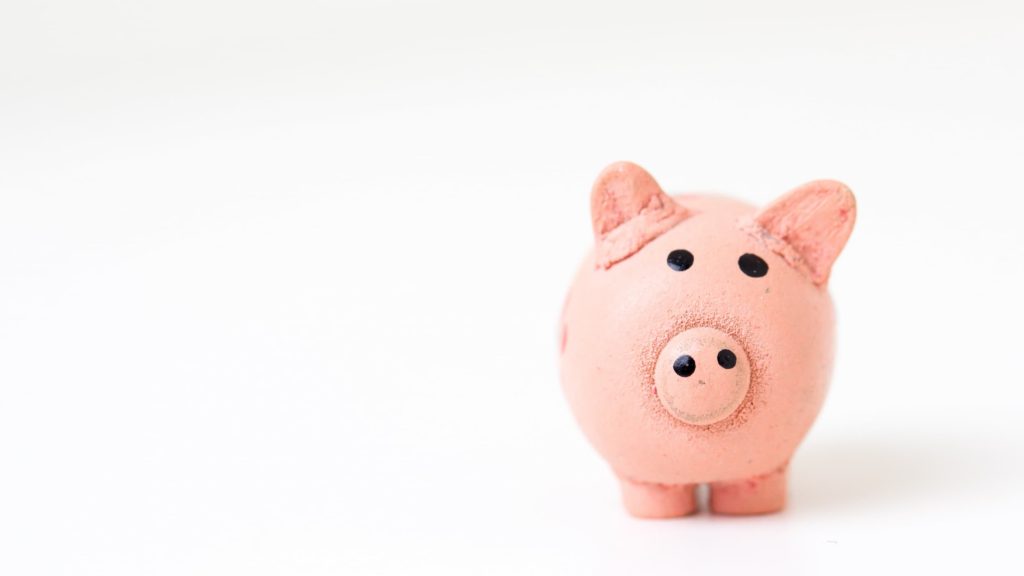Milestone 1: The Uh-Oh Fund
At this point, you should have completed your budget and are ready to move on to Milestone #1 on the Next Dollar Roadmap: The Uh-Oh Fund.
- Starting Point: Creating Your First Budget
- Milestone 1: The Uh-Oh Fund
- Milestone 2: Take Advantage of Your Employer Match
- Milestone 3: Pay Off Toxic Debt
- Milestone 4: Fully Funded Emergency Fund
- Milestone 5: Save 15%-25% of Your Income in Tax-Advantaged Retirement Accounts
- Milestone 6: Save for Flexibility in Bridge Accounts
- Milestone 7: Prefund Kids’ Expenses
- Milestone 8: Pay Off Remaining Debt
- Milestone 9: Total Financial Independence
Putting it simply, Murphy’s Law states: “Anything that can go wrong, will go wrong.”
This is especially true when you’re trying to save money.
Set a savings goal or try to start putting money away for that trip you’ve always wanted to take, then rest assured something is about to break.
Air conditioners, cars, and appliances are just a few examples of everyday items we take for granted when they’re working well. But when they need repair, living without them can be downright inconvenient.
A while ago as I was driving to work, my truck just died as I was turning onto one of the busiest roads in town.
Fortunately, I had enough speed to coast off to the shoulder and call a tow truck. $800+ later in repairs and I was up and rolling again, but it wasn’t exactly painless.
Now, $800 is a hefty sum of money and certainly not an amount I was eager to shell out at the time, but it also wasn’t severely debilitating because I had enough cash in savings to cover the repair.
I had an uh-oh fund.
An uh-oh fund, as you’ve probably guessed, exists to cover uh-oh’s: those unexpected financial surprises that are as welcome as a root canal.
Things like a sudden illness, a broken furnace, or a leaky roof. You don’t have the option to delay addressing the issue, but they’re more costly than run-of-the-mill miscellaneous expenses.
The reason you need an uh-oh fund should be equally obvious.
If you don’t have the money to cover the “uh-oh” then you’re probably going to have to borrow and incur debt to handle the problem.
This isn’t ideal because now the uh-oh becomes an uh-oh with interest.
Let’s look at an example.
Uh-Oh Fund Example: Penniless Pat & One Grand Grant
Penniless Pat & One Grand Grant are basically identical. In addition to having odd names, they have the same monthly after-tax income of $3,500.
They spend the same amounts on rent, groceries, fuel, etc. so that after all their monthly expenses are paid, they have $500 each remaining for either saving or spending.
Penniless Pat is really into music, so he spends his extra $500/month on concert tickets and streaming services. It’s costly, but his Josh Ritter collection is the bee’s knees.
One Grand Grant loves music too, but he decides to sit out the concerts and listen to Pandora at home for free.
As a result, he’s been using his $500/month to build up his uh-oh fund and start contributing to his company’s 401k plan to take advantage of the employer match.
Wouldn’t you know it? The air conditioners at both Pat’s and Grant’s homes go out at the same time. Shockingly enough, they have the same problem and the same costly $1,000 repair.
One Grand Grant pays cash for the setback and uses the next two months to get back on track.
Penniless Pat on the other hand doesn’t have any cash left since he went to that sick Nathaniel Rateliff concert last night.
While Pat’s taste in music is impeccable, his financial decisions have left him in a tight spot.
Fortunately, the A/C repair guy offers to put the repair on credit with an annual interest rate of 12%.
Pat tightens up next month and pays back $500 of the $1,000 balance, leaving him with $510 of debt.
Wait. Shouldn’t only owe $500 now?
Unfortunately, that’s not how credit works.
So why does Pat owe $510? Because Pat borrowed $1,000 last month which, at a 12% annual interest rate, incurred $10 in interest. ($1,000 x 12%/12months = $10)
So next month pat owes $510, right? Not quite. Pat now owes $515.10 because the $510 he owed from the 2nd month has incurred another $5.10 in interest.
Thankfully, Pat decides to forego Starbucks one morning and direct the latte money toward his debt and have it gone for good.
Final total for Grant = $1,000
Final total for Pat = $1,015.10
Now you may be tempted to look at this and point out that $15.10 isn’t that much money. I have to agree, but what if a few of the variables changed?
What if the repair was more expensive and took longer to repay?
What if Pat’s A/C repairman didn’t extend credit and Pat had to use his Visa which has an even higher interest rate?
In 2023, credit card companies charge on average 23.55% interest and the highest card out there from First Premier Bank is 36%!
Imagine stacking up a few repairs on THAT card. Ouch!
And if our friend Pat is normal, in all likelihood he’s carrying a credit card balance each month. After all, in 2021, 45.4% of Americans carried credit card debt.
The average household credit card debt in 2021? $6,270!!!
Running through the math, this means the average credit debt carrying American is incurring $99.95 ($6,270 x 19.13%/12 = $99.95) in interest charges each month. That number has significantly increased in 2022.
Our friend Pat is going to need to do more than drop his Spotify subscription to pay that down.
This is why it’s so important to keep an eye on your debts. Factors like outstanding balances and interest rates can make you a slave to them.
And, this is why you need an Uh-oh fund. You have to be ready to handle disruptions to your financial progress without turning to debt for help.
So, Why $1,000?
I’m so glad you asked.
Truthfully, I don’t think $1000 is enough; at least not for me. But I own a home, two cars, have two kids, and a dog, and I’m not getting any younger.
If you’re young, healthy, and single with no dependents $1,000 may be enough, but I would shoot for that number at a minimum.
Another uh-oh fund goal is to aim for the highest deductible you carry for insurance. For cars, this is generally lower than $1,000, but may be higher for your home if you have one.
Also, depending on your health insurance your annual maximum out-of-pocket may be considerably high. The 2022 max for family high deductible health plans (HDHP’s) is $15,000!
Granted, that doesn’t apply to all plans and would only be realized if everyone on the policy cumulatively reaches their individual maximums in one year (HIGHLY unlikely), but it’s something to keep in mind.
As a sidebar, my family is pretty healthy so we use the HDHP with a Health Savings Account (HSA). The individual max deductible on ours is $3,000/each so that would be my minimum goal for our uh-oh fund.
You Need An Uh-Oh Fund to Make Progress
Another primary reason I recommend a small starter uh-oh fund is for debt elimination. Trying to pay down debt while not being able to handle unexpected expenses is like trying to bail water with a bottomless bucket.
You’re less likely to get much traction paying down those debts and may grow frustrated with the slow progress.
As a result, one might give into the temptation to throw in the towel entirely which won’t ever lead to financial success.
The Budget is Only A Starting Point
Finally, bear in mind this is only a starting point for building wealth for yourself.
An emergency fund should be able to cover bigger setbacks like extended periods of income loss or a major health event.
Most commonly, it’s recommended that a full-size emergency fund house 3-6 months of your annual expenses.
That larger emergency fund falls as milestone four on our financial roadmap, right after high-interest debt elimination.
If you find it challenging to find $1,000 to start your own uh-oh fund, go back to our post on creating a budget.
Going through that exercise will help identify any available dollars to stash away for Murphy’s next visit.
Next Stop: Milestone #2 – Take Advantage of Your Employer Match.







